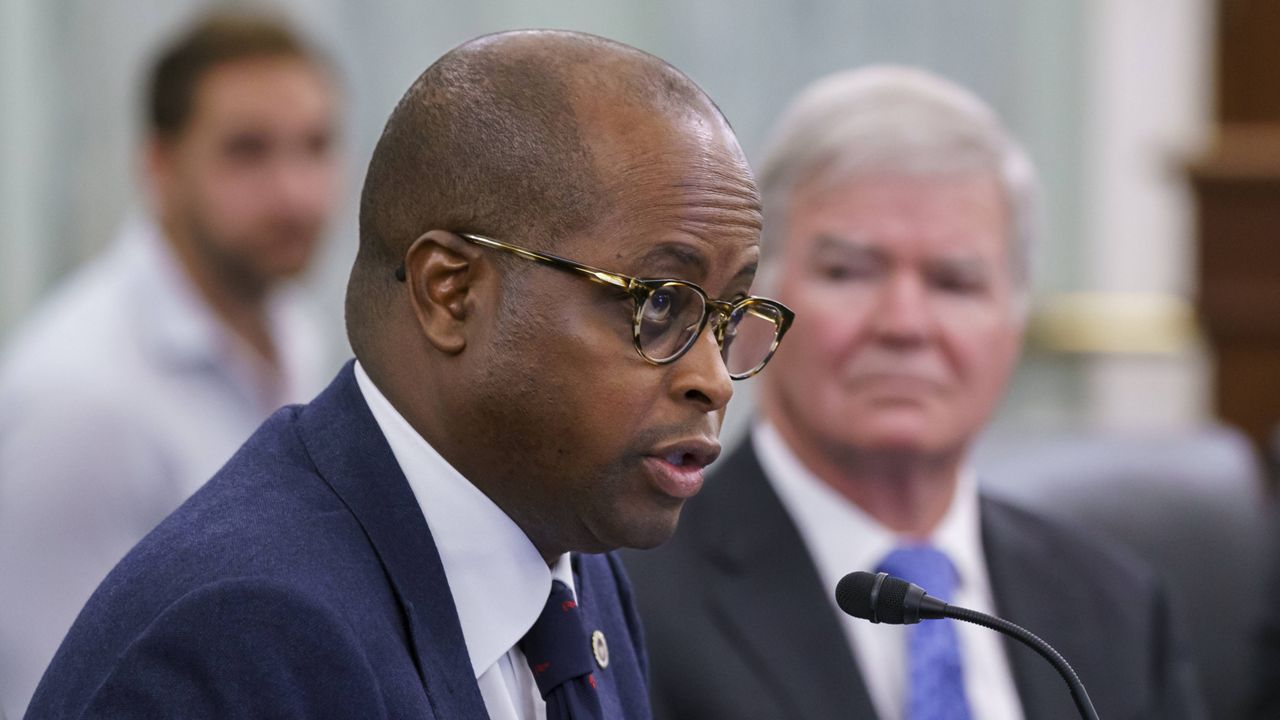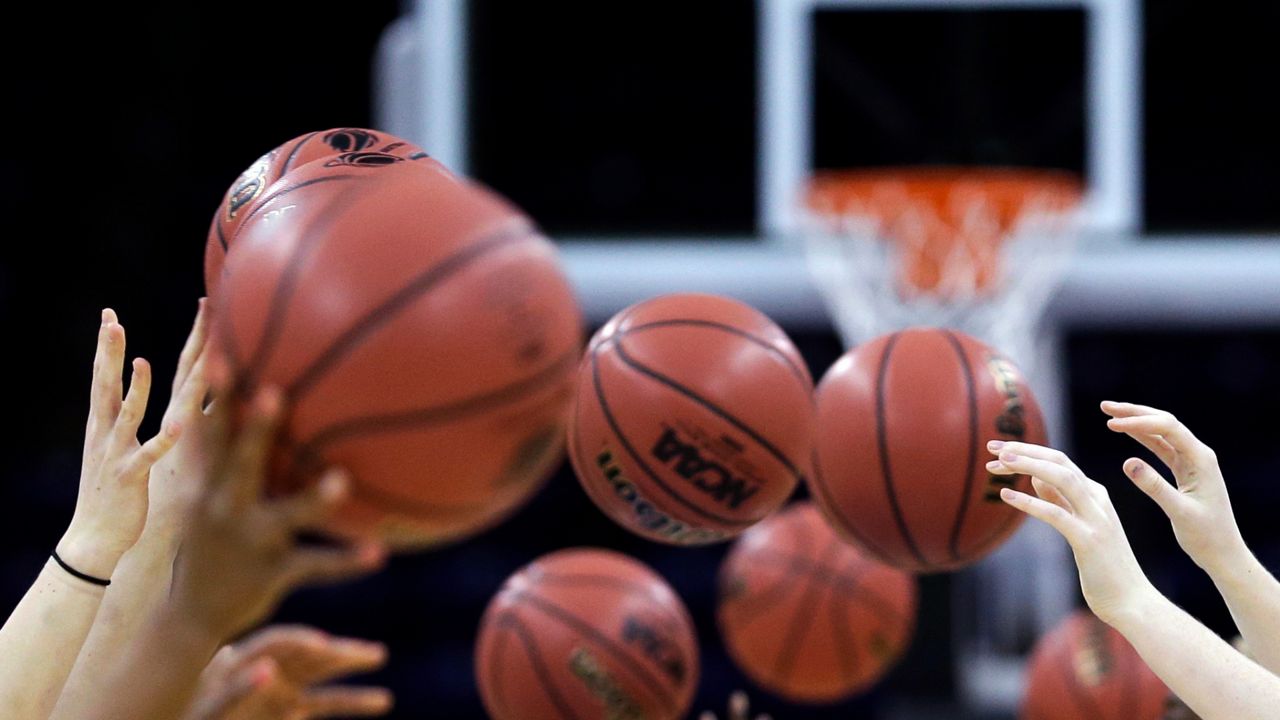NCAA President Mark Emmert and Gonzaga basketball coach Mark Few urged Congress on Wednesday to pass a federal law that would set a uniformed standard for student athletes being paid for use of their name, image or likeness.
What You Need To Know
- The Senate Commerce Commitee held a hearing Wednesday on whether to pass a federal law federal law that would set a uniformed standard for student athletes being paid for use of their name, image or likeness (NIL)
- Eighteen states have passed laws allowing NIL payments, such as endorsements, personal appearances or other business opportunities made possible by their status as a student athlete
- NCAA officials and coaches are concerned, however, that a hodgepodge of varying laws from state to state will create an unlevel playing field
- NCAA President Mark Emmert and Gonzaga basketball coach Mark Few were among the witnesses who testified before the committee
College sports is on a tight deadline. Eighteen states have passed laws allowing name, image and likeness (NIL) payments, with a 19th state — Connecticut — advancing a bill to the governor’s desk Wednesday. Five of those laws are set to take effect July 1, allowing, for the first time, college players to be paid, although not directly by their universities.
They would instead cash in through endorsements, personal appearances or other business opportunities made possible by their status as a student athlete.
NCAA officials and coaches are concerned, however, that a hodgepodge of varying laws from state to state will create an unlevel playing field, with schools in states without NIL laws recruiting against programs where star players can monetize their talent.
“We do need some parameters to preserve the collegiate model and protect the recruiting environment,” Few testified before the Senate Commerce Committee. “Without these parameters, the unintended consequences could be disastrous.”
Of the five witnesses who addressed the committee, all agreed athletes should be allowed to be compensated for their name, image or likeness. But there were differences over what exactly a federal NIL law should entail — or whether there should be one at all.
Rod Gilmore, an ESPN college football analyst and lawyer, argued that Congress should only pass an NIL law if its aim is to protect the athletes, as opposed to the universities. He predicted that the free market would create an “equilibrium” for name, image and likeness payments — in other words, states without laws would eventually feel pressured into adopting them, too.
“The NCAA believes — and I have had coaches and administrators telling me this — that third parties will pay less to athletic departments if those third parties are allowed to pay players directly,” Gilmore claimed. “In other words, the athletic departments want to protect their revenue stream, which is why the NCAA wants a national name, image and likeness law.
“Players have been treated like second-class citizens without the right to enjoy the freedoms and the rights that the NCAA, every other student and every other American enjoys — the right to fully participate in a free market,” he added.
Without a uniformed law, Few said Gonzaga, located in Washington state, which has no NIL law, would be at a disadvantage trying to recruit against programs that can offer monetary gifts or endorsements.
“I don't think the story of Gonzaga playing in two national championship games would ever happen if this was around prior,” he said.
Sen. Cory Brooker, D-N.J., who is not a current member of the Commerce Committee, testified that Congress should not pass a narrow bill focusing on NIL but should address the broader issues facing college athletes, including gender inequities, health and safety, and what he called the exploitation of athletes.
“Modern college athletics is a de facto for-profit industry that is just too often exploiting men and women, taking advantage of their genius, of their talent, of their artistry, robbing many of them of earnings in their peak years, leaving them often injured with a lifetime worth of costs, sometimes looking back and their universities are still making profits off of their names,” said Booker, who played college football at Stanford.
Booker recalled participating in a Commerce Committee hearing seven years ago when the panel discussed the welfare of college athletes. He said little had changed since and that he feared, if lawmakers didn’t act now, the issues might go unresolved for many more years.
College athletics generated $18.9 billion in revenue in 2019, according to the NCAA.
Emmert said a federal NIL bill should not only include uniformed standards that would supercede state laws but also offer Title IX protections to ensure fair opportunities for female athletes, preserve the essence of college amateur athletics by clearly defining that athletes are not university employees and protect the NCAA from litigation from former athletes seeking compensation of which they believe they were deprived.
Emmert added that it’s also important that “pay for play” payments — an NCAA violation — are not masked as NIL opportunities.
“There's an urgent need for federal legislative solutions so that we may provide all student athletes with a broad NIL opportunity and a fair system of participation and competition,” the NCAA president said.
Some witnesses said colleges should do a better job of covering health care expenses for injuries that athletes suffered in college even after their eligibility has expired.
Howard University President Dr. Wayne Frederick, however, cautioned against lawmakers adding significant financial burdens to smaller athletic programs. He noted that very few athletic programs are profitable and that football and men’s basketball generally subsidize all other sports.
“Many smaller schools simply don't have the funds to take on additional financial responsibilities,” he said. “If they were required to pay for additional student athlete medical expenses or field more staff to ensure compliance with rules and regulations around student athlete compensation, the resulting strain would inevitably force them to downsize or eliminate certain athletic offerings entirely.”
That would mean fewer opportunities for both men and women, Frederick said.
Ryan Chatelain - Digital Media Producer
Ryan Chatelain is a national news digital content producer for Spectrum News and is based in New York City. He has previously covered both news and sports for WFAN Sports Radio, CBS New York, Newsday, amNewYork and The Courier in his home state of Louisiana.





